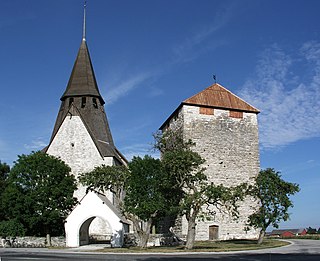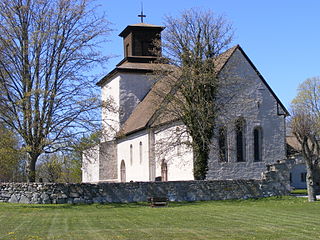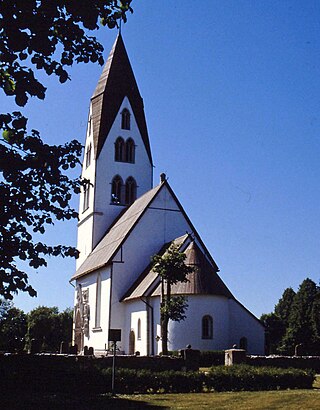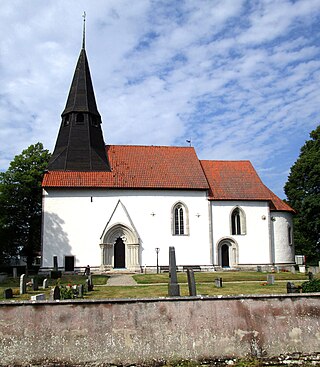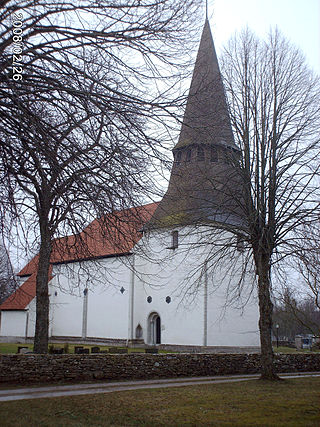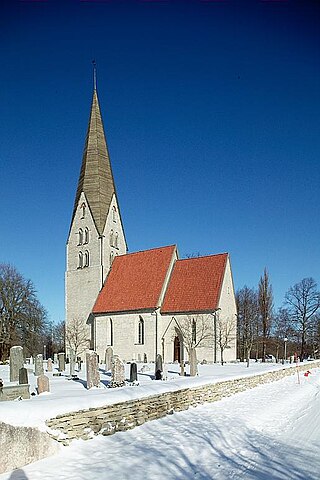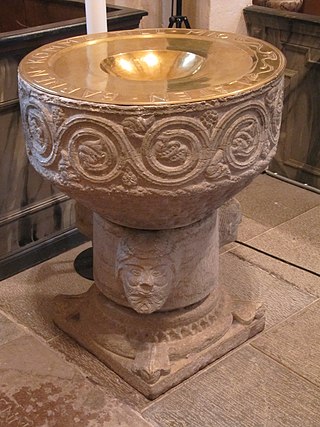Works
Most works of art attributed to Byzantios are decorated baptismal fonts. Around a dozen such fonts have been attributed Byzantios, as well as some bases of fonts whose upper parts have been lost. Some of these attributions are not generally agreed upon, and as to whether or not Byzantios also made other works, notably the friezes on the facade of Vänge Church, is a matter of debate. [4] [5] All attributed works, with the possible exception of the base of the baptismal font in Dalby, are located on Gotland.
The following list of works attributed to Byzantios is based on the original enumeration of works done by Roosval, and on the later enumerations made by Svanberg and Svensson.
List of works attributed to Byzantios
| Type of sculpture | Location | Image | Notes and references |
|---|---|---|---|
Baptismal font |  | Attributed to Byzantios by Roosval, Svanberg and Svensson. [4] [14] [1] | |
Baptismal font (possibly only the base) |  | Attributed to Byzantios only by Svanberg. [15] | |
Baptismal font |  | Attributed to Byzantios by Roosval, Svanberg and Svensson. [4] [14] [1] | |
Baptismal font |  | Attributed to Byzantios by Roosval, Svanberg and Svensson. [4] [14] [1] | |
Baptismal font |  | Attributed to Byzantios by Roosval, Svanberg and Svensson. [4] [14] [1] | |
Baptismal font |  | Attributed to Byzantios by Roosval, Svanberg and Svensson. [4] [14] [1] | |
Baptismal font |  | Attributed to Byzantios by Roosval, Svanberg and Svensson. [4] [14] [1] | |
Baptismal font (only the base) |  | Attributed to Byzantios by Roosval, Svanberg and Svensson. [4] [14] [1] | |
Baptismal font (only the base) |  | Attributed to Byzantios by Roosval and Svanberg. Not mentioned by Svensson. [14] [1] | |
Baptismal font |  | Explicitly attributed to Byzantios Svensson. In enumerating the works by Byzantios, Roosval does not mention Mästerby; however he mentions the baptismal font at Mästerby later in the article. Svanberg does not mention Mästerby. [4] [1] | |
Baptismal font |  | Attributed to Byzantios by Roosval, Svanberg and Svensson. [4] [14] [1] | |
Baptismal font |  | Attributed to Byzantios by Roosval, Svanberg and Svensson. [4] [14] [1] | |
Baptismal font |  | Attributed to Byzantios by Roosval, Svanberg and Svensson. [4] [14] [1] | |
Frieze |  | Attributed to Byzantios by Roosval and Svanberg. Svensson notes that the attribution is disputed. [4] [14] [1] | |
Baptismal font |  | Attributed to Byzantios by Roosval, Svanberg and Svensson. [4] [14] [1] | |
Baptismal font | Öja Church (now in Gotland Museum, Visby) |  | Attributed to Byzantios by Roosval, Svanberg and Svensson. [4] [14] [1] |




